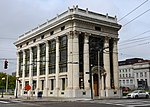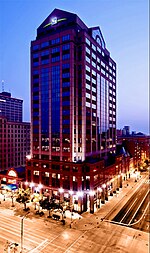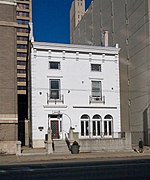WDPS
WDPS (89.5 FM) (for: Dayton Public Schools and its nickname Dayton's Power Source") is a radio station broadcasting a Jazz format. It serves its city of license, Dayton, Ohio, United States. The station is currently owned by Dayton Public Schools. Its programming is aired weekdays during school hours during the curricular school year. The frequency is shared with WQRP which airs a gospel music format when WDPS programming ends after the school day. According to a Dayton Daily News story dated July 21, 2009, the station has moved to new studios located in the David H. Ponitz Career Technology Center at 741 West Washington St. A switch to a "real jazz" format has also taken place.
Excerpt from the Wikipedia article WDPS (License: CC BY-SA 3.0, Authors).WDPS
West 4th Street, Dayton
Geographical coordinates (GPS) Address Nearby Places Show on map
Geographical coordinates (GPS)
| Latitude | Longitude |
|---|---|
| N 39.757777777778 ° | E -84.193333333333 ° |
Address
West 4th Street 100
45402 Dayton
Ohio, United States
Open on Google Maps











